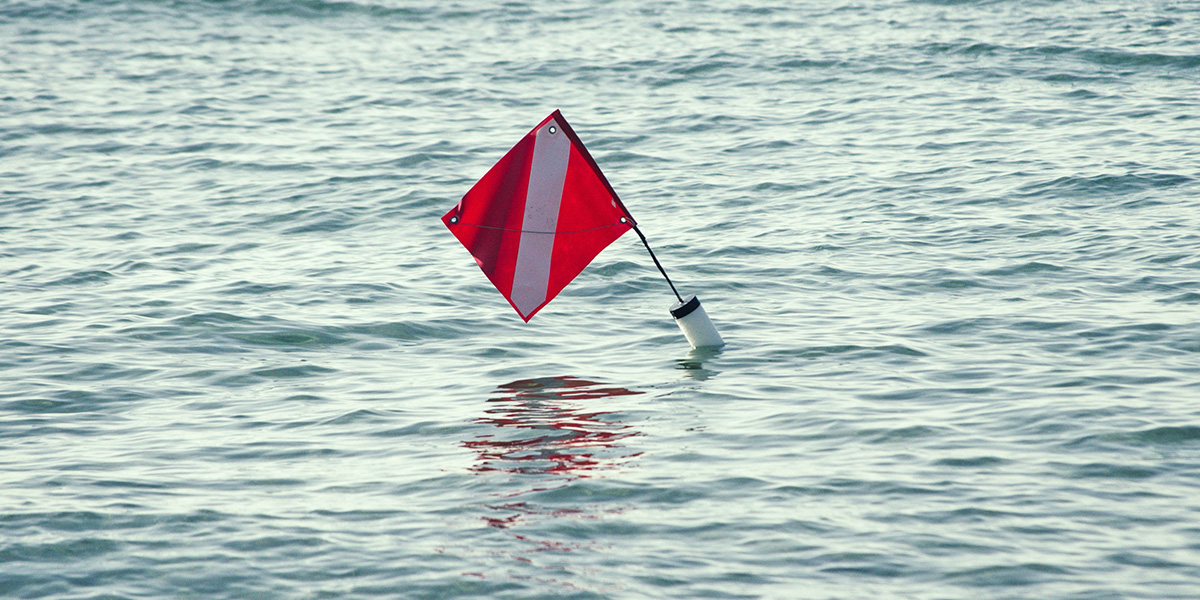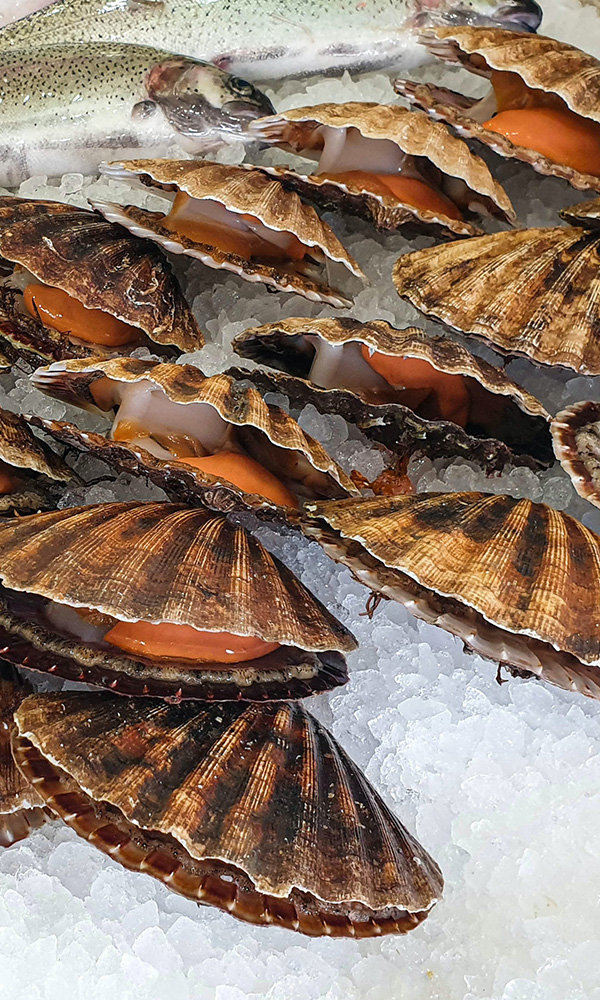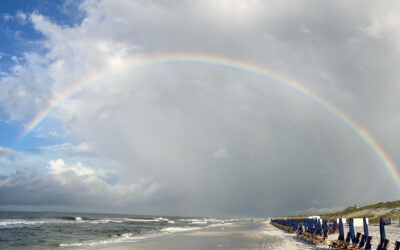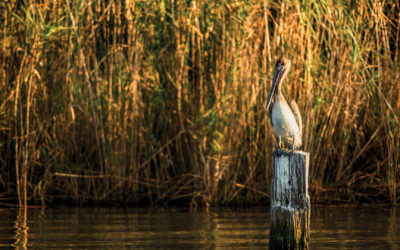How to Go Scalloping in Cape San Blas
Everything You Need to Know

Calling all seafood lovers! Scallop season begins along the Forgotten Coast on Aug. 16, and only lasts until Sept. 24. If you’ve never experienced the thrill of “going scalloping” before, consider this an invitation!
Why does everyone rave about scallop season? Simple—it’s fun, doesn’t require a lot of skill or gear, and, after a day spent in the water, you get to enjoy a delicious meal you caught yourself.
Bay Scallops live in the shallow seagrass beds found along the edges of St. Joe Bay in water that’s typically around 4-8 feet deep. They’re relatively easy to spot amid the swaying seagrass thanks to their electric blue eyes.
That’s right! Bay Scallops have rows of up to 100 tiny blue eyes lining the outer rim of their shell. All scallop hunters need to do is scoop them into a mesh bag, but thanks to all of those tiny eyes, they’ll probably see you coming. Bay Scallops propel themselves through the water by opening and closing their shell, so it may take a few tries to catch them until you get the hang of it. This is one of the reasons why the vast majority of folks prefer scalloping from a boat. It can get tiring after a while.
The only thing you are absolutely required to have for scalloping is a saltwater fishing license. These may be obtained online, at fishing/dive shops, or you can go scalloping with a licensed guide.
Other gear to have on hand
• Diving flag
• Snorkel
• Mask
• Mesh bag
• Fins
• Gloves
Florida law allows
• 2 gallons of whole scallops in the shell or 1 pint of scallop meat.
• A maximum of 10 gallons of whole scallops per boat.
Scalloping from a boat makes it easy to maneuver from seagrass bed to seagrass bed, but it’s not necessary. A lot of seagrass beds are found close to the shoreline. If you choose to swim out to a seagrass bed, remember to check the tide times and use a dive flag to alert boaters to snorkelers in the area.

To help preserve the Bay Scallop population, Sea Grant Florida, a university-based program that supports research and education about coastal resources, suggests the following:
Best practices when scalloping:
• Don’t harvest scallops smaller than 2 inches.
• Keep only what you’ll eat.
• Don’t harvest more scallops than allowed.
• Don’t hurt the seagrass.
• Be aware of tidal times for your safety.
Ready to hunt for scallops? Our friends at Scallop Cove on Cape San Blas will gladly rent you gear, a boat, and provide you with the required license.
For additional information on cleaning and preparing your catch, Sea Grant Florida has videos and information about safe shucking.
If cleaning and shucking your catch doesn’t sound like fun after a day spent on the water, there are several restaurants on and around the Cape, like Shipwreck Raw Bar and the Cat 5 Raw Bar, that will gladly prepare and cook your catch for you! Talk about a great way to end a fun day. Leave the mess up to someone else!
We’re thrilled you’ve decided to go scalloping and explore the beautiful Forgotten Coast. Don’t forget to book a fabulous home so you can make the most of your scallop-hunting adventure.

Recent Stories
Explore and discover all of the Emerald coast.
Sandcastle Kids: Healing Hearts
Sandcastle Kids, a South Walton 501c3 nonprofit, carries out their healing mission by providing all-expenses-paid vacations to families experiencing a diagnosis of childhood cancer. As you can imagine, these families undergo tremendous mental, emotional, and financial...
The Secret History of Eastern Choctawhatchee Bay
There’s an odd cluster of pilings on the eastern edge of the Choctawhatchee Bay. Ever noticed them when driving north across the bridge? These aren’t the remains of an ill-fated attempt at a bridge, but are part of a system capable of detecting low-flying aircraft...
Serving in Seaside for 23 Years and Counting
Bartender Mo Mosely has been greeting patrons and slinging drinks at Bud and Alley’s rooftop bar for 23 years (and counting). Back before Scenic 30A was the bustling, year-round destination that it is today, Bud and Alley’s was the only bar on 30A open late into the...



